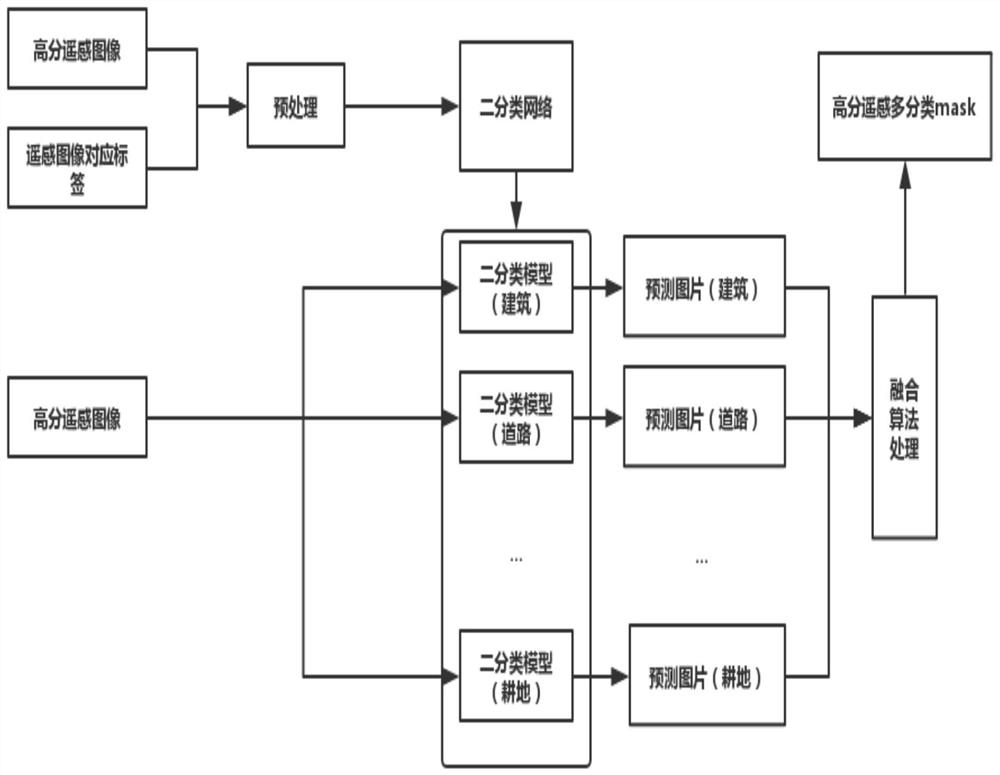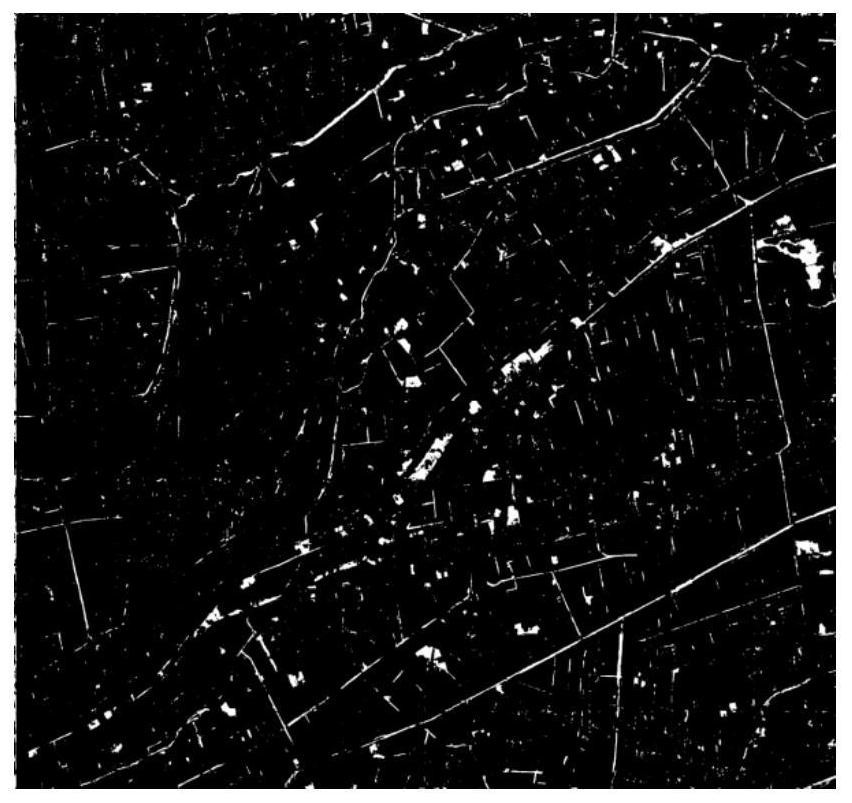Method of Fusion of Binary Classification Semantic Segmentation Map into Multi-Classification Semantic Map Based on High-resolution Remote Sensing Image
A remote sensing image and semantic segmentation technology, which is applied in the directions of instruments, calculations, character and pattern recognition, etc., to achieve the effect of improving the overall classification accuracy
- Summary
- Abstract
- Description
- Claims
- Application Information
AI Technical Summary
Problems solved by technology
Method used
Image
Examples
Embodiment Construction
[0027] The invention includes several steps of image preprocessing, training multiple binary classification models, multiple binary classification predictions for a picture, calculating final classification discrimination matrix and classifying individual pixel points one by one.
[0028] Step 1. Image data preprocessing (assuming that the multi-category category is N categories)
[0029] 1-1 Firstly, the high-score remote sensing images and their corresponding labels are randomly cropped into pairs of small images with a size of 256*256.
[0030] 1-2 Then process the small label map into N two-category label maps, 0 in each label map represents the non-kth class, and 1 represents the k-th class (where k ranges from 0 to N).
[0031] 1-3 For the new original image and the corresponding N groups of label images, perform operations such as mirror flip, rotation, and Gaussian white noise in pairs to achieve data expansion.
[0032] Step 2. Train multiple binary classification ne...
PUM
 Login to View More
Login to View More Abstract
Description
Claims
Application Information
 Login to View More
Login to View More - R&D
- Intellectual Property
- Life Sciences
- Materials
- Tech Scout
- Unparalleled Data Quality
- Higher Quality Content
- 60% Fewer Hallucinations
Browse by: Latest US Patents, China's latest patents, Technical Efficacy Thesaurus, Application Domain, Technology Topic, Popular Technical Reports.
© 2025 PatSnap. All rights reserved.Legal|Privacy policy|Modern Slavery Act Transparency Statement|Sitemap|About US| Contact US: help@patsnap.com



